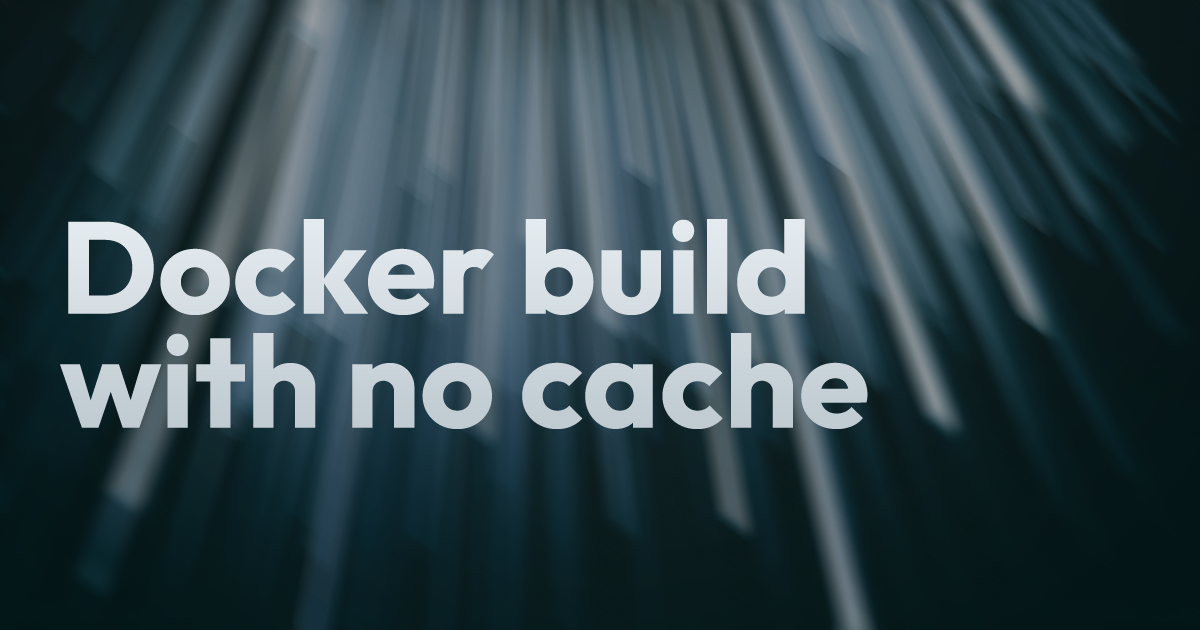Building Docker images as fast as possible is essential. The quicker you can build an image, the more quickly you can test it and deploy it to production. Docker's build cache is a great way to speed up builds by reusing layers from previous builds.
How Docker caching works
The Docker build cache is best thought of as a stack going from the top of your Dockerfile to the bottom. Given a Dockerfile like this:
FROM node:16
RUN apt-get update && apt-get install -y curl
WORKDIR /app
COPY package.json package-lock.json /app/
RUN npm install
COPY . .
RUN npm buildEach line in the Dockerfile is a step in the Docker image build process that creates a layer in the image. These layers stack on top of each other from top to bottom to form your final Docker image.
This inheritance forms the backbone of Docker layer caching.
When you build an image with the docker build command, Docker executes each step from top to bottom. When executing a given step, it checks to see if it already has a layer for that step. If the step hasn't changed since the last build, the layer will exist in the cache and not get rebuilt.
If the step has changed (like you would see in the COPY . . because our source code changes), the layer cache won't have a match, and the step gets built again.
It's also possible for the step to not be present in the cache if you have cleaned your local Docker layer cache.
Using layer caching during docker build is why the order of your steps is essential. If you change a step, all the steps below get built again.
Building an image without the cache using --no-cache
But, sometimes, you want to build an image without the cache. You may be debugging a build issue and want to start with a clean slate. Or you may want to force a dependency to get upgraded. Whatever the reason, you can build an image without the cache by using the --no-cache option.
docker build --no-cache .This flag tells the Docker daemon to skip the cache during a docker build and run every step in the Dockerfile. It results in a slower build but will ensure you run every step. Specifying --no-cache is helpful for debugging build issues. You can also use it to force a dependency to upgrade, like curl in our apt-get install above.
Hacking in a specific point to invalidate the cache
Sometimes you want to invalidate the cache at a specific point in the Dockerfile. For example, you might want to invalidate the cache after the npm install step so that you can debug the npm build step.
You can use a trick with the ARG instruction for that. We can set a ARG STOP=1 step in our Dockerfile above the npm build. This causes the cache to invalidate at that line when we change its value.
...
COPY . .
ARG STOP=1
RUN npm buildNow when you run a docker build, you see that the cache gets invalidated before the build step runs. You can invalidate it again by changing the value. You can change it inside the Dockerfile or use a build argument to change it when invoking the docker build.
docker build --build-arg STOP=2 .Conclusion
The Docker build cache is a great way to speed up builds by reusing layers from previous builds. Optimizing for using the layer cache as much as possible ultimately speeds up a Docker build.
But sometimes, you want to build an image without the Docker cache. Using the --no-cache option will force the Docker daemon to run every step in the Dockerfile during a build. It helps debug build issues or force OS dependencies to get upgraded.
The Docker build cache is critical to building Docker images. There are other fundamentals to building a Docker image that can make your Docker builds even faster.

